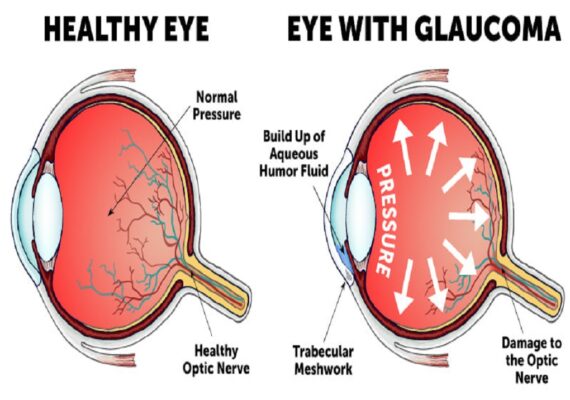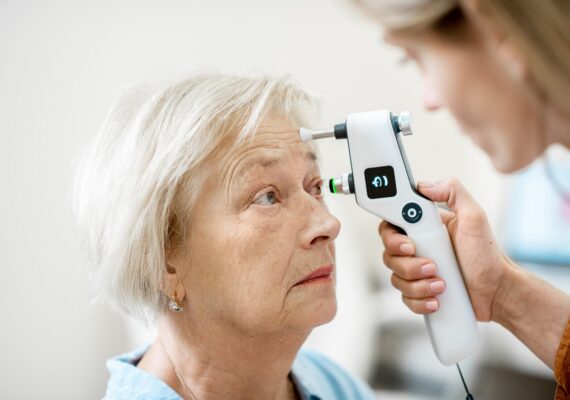Glaucoma is an eye condition that develops when too much fluid pressure builds up inside of the eye. It tends to be inherited and may not show up until later in life.
The increased pressure, called intraocular pressure, can damage the optic nerve, which transmits images to the brain. If damage to the optic nerve from high eye pressure continues, glaucoma will cause loss of vision. Without treatment, glaucoma can cause total permanent blindness within a few years.
Because most people with glaucoma have no early symptoms or pain from this increased pressure, it is important to see your ophthalmologist regularly so that glaucoma can be diagnosed and treated before long-term visual loss occurs.
What Are the Types of Glaucoma?
There are two main types of glaucoma:
Open-angle glaucoma. Also called wide-angle glaucoma, this is the most common type of glaucoma. The structures of the eye appear normal, but fluid in the eye does not flow properly through the drain of the eye, called the trabecular meshwork.
Angle-closure glaucoma. Also called acute or chronic angle-closure or narrow-angle glaucoma, this type of glaucoma is less common, but can cause a sudden buildup of pressure in the eye. Drainage may be poor because the angle between the iris and the cornea (where a drainage channel for the eye is located) is too narrow. Or, the pupil opens too wide, narrowing the angle and blocking the flow of the fluid through that channel.
Who Gets Glaucoma?
You are at an increased risk of glaucoma if you:
Are over age 40.
Have a family history of glaucoma.
Have poor vision.
Have diabetes.
Take systemic corticosteroid medications, such as prednisone.


Description & Process
What Are the Symptoms of Glaucoma?
If you have any of the following symptoms, seek immediate medical care:
Seeing halos around lights
Vision loss
Redness in the eye
Eye that looks hazy (particularly in infants)
Nausea or vomiting
Pain in the eye
Narrowing of vision (tunnel vision)
How Is Glaucoma Treated?
Glaucoma treatment may include prescription eye drops, laser, or microsurgery.
Eye drops for glaucoma. These either reduce the formation of fluid in the front of the eye or increase its outflow. Side effects of glaucoma drops may include allergy, redness of the eyes, brief stinging, blurred vision, and irritated eyes. Some glaucoma drugs may affect the heart and lungs. Be sure to tell your doctor about any glaucoma medication you are currently taking or are allergic to.
Laser surgery for glaucoma. Laser surgery for glaucoma slightly increases the outflow of the fluid from the eye in open-angle glaucoma or eliminates fluid blockage in angle-closure glaucoma. Types of laser surgery for glaucoma include trabeculoplasty, in which a laser is used to pull open the trabecular meshwork drainage area; iridotomy, in which a tiny hole is made in the iris, allowing the fluid to flow more freely; and cyclophotocoagulation, in which a laser beam treats areas of the ciliary body, reducing the production of fluid.
Microsurgery for glaucoma. In an operation called a trabeculectomy, a new channel is created to drain the fluid, thereby reducing intraocular pressure that causes glaucoma. Sometimes this form of glaucoma surgery fails and must be redone. For some patients, a glaucoma implant is the best option. Other complications of microsurgery for glaucoma include some temporary or permanent loss of vision, as well as bleeding or infection.

